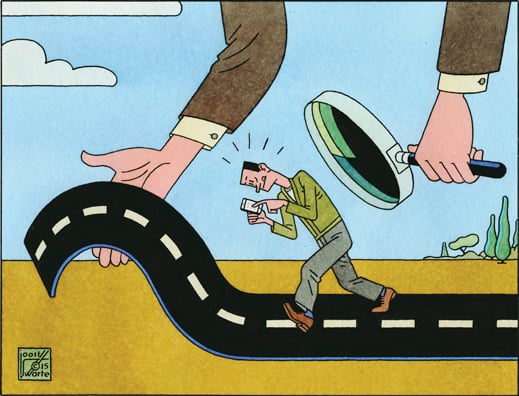Persuasive technologies surround us, and they’re growing smarter. How do these technologies work? And why?

GSN Games, which designs mobile games like poker and bingo, collects billions of signals every day from the phones and tablets its players are using—revealing everything from the time of day they play to the type of game they prefer to how they deal with failure. If two people were to download a game onto the same type of phone simultaneously, in as little as five minutes their games would begin to diverge—each one automatically tailored to its user’s style of play.Continuing:
Yet GSN does not simply track customers’ preferences and customize its services accordingly, as many digital businesses do. In an effort to induce players to play longer and try more games, it uses the data it pulls from phones to watch for signs that they are tiring. Largely by measuring how frequently, how fervently, and how quickly you press on the screen, the company can predict with a high degree of accuracy just when you are likely to lose interest—giving it the chance to suggest other games long before that happens.
The games are free, but GSN shows ads and sells virtual items that are useful to players, so the longer the company can persuade someone to play, the more money it can make. Its quickly growing revenue and earnings are a testament to how well this strategy works, says Portman Wills, GSN’s chief information officer. Along with factors such as smart engineering and creative design, using data to shape persuasive tactics is a key to the company’s success.
The idea that computers, mobile phones, websites, and other technologies could be designed to influence people’s behavior and even attitudes dates back to the early 1990s, when Stanford researcher B. J. Fogg coined the term “persuasive computing” (later broadened to “persuasive technology”). But today many companies have taken that one step further: using technologies that measure customer behavior to design products that are not just persuasive but specifically aimed at forging new habits....MORE
Contents
- Technology and Persuasion
- Persuasive Texting in Mozambique
- New Technologies Persuade in Old Ways
- Pretrial Technology
- Compulsive Behavior Sells
- Fake Persuaders
- New Technologies, New Marketing
- Voters, Algorithms, and Persuasion
- Health Persuasion Gets Better
- Advertisers Seeks Answers from Neuroscience
- “Everything Is a Recommendation”
- A Closer Look at Persuasive Technology